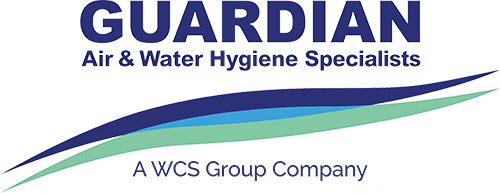Closed Systems Remote Monitoring

“A pre-incident risk avoidance system, or post-incident action alert system?” Stewart McGillivray discusses:
Closed systems remote corrosion monitoring has become more popular over the past few years, and has been incorporated into the current BSRIA guidance for water treatment as a useful tool to monitor corrosion levels, providing a real time view of water quality and the risk of corrosion.
Arguably, the monitoring of the corrosion risk has always been present based upon the hydraulic operating characteristics of a system (BMS and MEP specification information) and the site-based water analysis undertaken by a water treatment specialist (periodic test reports).
Other important information held by the incumbent Facilities Management team would be maintenance information, on record for remedial works that require a partial drain down and/or equipment failures. A change of use/tenancy could also affect the water quality that can directly influence corrosion.
Clearly, remote monitoring would capture any incident that affects the rate of corrosion and could be seen as the golden reporting tool. However, at that event point, the damage has already occurred and would require greater intrusive remedial works to bring the systems under control.
Our argument that the pre-corrosion risk information has always been available but not necessarily clearly made visible to the Building Manager can be broken down thus:
Hydraulic operating information
It is well known and documented that closed systems should be maintained and operating as designed. The avoidance of low and loss of flow and pressure is key to ensuring circulation of any water conditioning, be that either chemical or returning to filtration/deaerators and the such-like.
Keeping the system watertight and as air free as possible is probably the key issue to control corrosion in mixed metal systems.
The BMS will flag pump failures and, where there are tenancy floors, heat meters can give information as to the demand flow rates on each floor. Plant failures are also captured such as boilers/chillers/ASHP/WSHP and critically, pressurisation units. With the increased use of filtration and de gassing/deaeration equipment with BAC Net connections, this important water quality equipment can also be monitored at the BMS.
Loss of low, loss of pressurisation, changes in heat demand and water loss can all influence the corrosion rate if allowed to persist over time.
With the coming of more carbon neutral heating/cooling equipment with buffer vessels/thermal stores, very low temperature heating systems, two-port diverse load systems and seasonal shut downs, the idea that simply running pumps and controlling temperature to mitigate good water quality becomes increasingly a more complex task.
Water quality monitoring – site-based
Traditionally, maintenance companies would monitor water quality on a quarterly basis. We would comment that with the installation of more complex systems as mentioned earlier, this may be insufficient to capture the operational hydraulic influence of the building to water quality.
In multiple tenancy offices, where fit outs can take place frequently, these periodic checks, if not managed, may well miss the moment in time when Landlord to tenant systems are integrated.
The financial impact can be great if every scenario required a site visit and water sampling to be carried out. However, as we pointed to earlier, these changes can be monitored and assessed in other ways which we will come on to.
Remote corrosion monitoring
There are a fair few corrosion monitoring systems available on the market, from plug in general corrosion monitors utilising Linear Polarisation Resistance (LPR), electronic coupons and the simple mechanical corrosion coupons to more complex monitors that also look at pressure, conductivity, temperature, crevice corrosion as well as general corrosion and dissolved oxygen.
These are real time methods and can reduce the knee jerk reactions when spurious sample results are returned from laboratories or sampling mistakes made on site. However, the flaw in the de-risk approach is that when corrosion is detected, something has already occurred within the system; something that could have been avoided or captured earlier.
Changing to a homogeneous approach to the corrosion risk
Taking the disparate accessibility of information referred to previously, we can also be sure that all have a clue as to the risk of corrosion within a closed system. We did refer to the fact that some of this information has and is already available and traditionally monitored.
The trick would be to create a visible platform whereby the key corrosion risk factors are monitored against each other and remove some of the clutter of a BMS system or water sampling results. A corrosion measure would be maintained but only as an absolute warning in the event of a catastrophic event and to give confidence in the system while removing doubt when spurious water sample results are returned.
The system would be live and tracked so that an operator can determine the cause and effect of the operational status of the plant against the risk of corrosion.
Key parameters to be monitored
Corrosion monitoring is never any one parameter of measure, it is the understanding of the relationship between a number of key parameters that can affect corrosion or Multiple Line Of Evidence (MLOE).
In the first instance the threat of corrosion must be identified which may be inherent in the design or operating conditions. This can be in the form of a review of the design and operating conditions.
Secondly what measures are taken to prevent/mitigate the threat. Part of the Standard Operating Procedures or PPM’s.
And finally, what is the efficacy of the response? Monitoring the systems operation for occupancy comfort.
Parameters
Oxygen and pressure: We mentioned that maintaining a system as free of oxygen as possible is a key corrosion prevention measure, however, monitoring the pressurisation unit and system pressure is a pre-event parameter when assessing the oxygen risk.
Dissolved oxygen sensors are available but can be expensive and subject to temperature/pressure fluctuations.
Conductivity: Conductivity is a measure of the electrical potential of a medium to pass an electrical current through water. This is the basis of the electro chemical reaction of the corrosion process.
pH: Chemical or electro chemical water conditioning can affect the pH (acidity or alkalinity) of the water. This parameter can be critical with certain materials and is a useful measure for general corrosion rate arrest.
Higher pH levels can also deter some bacterial proliferation.
A sudden de-pressurisation of a system will affect pH levels which can directly impact a microbial community, hence a direct commonality between pH and pressure.
Abiotic factors relevant to operation: Temperature monitoring to ensure that operations temperatures do not overtly influence corrosion (high temperatures can increase the corrosion risk; low to medium temperatures can encourage the proliferation of bacteria).
Loss of flow can lead to stagnancy and encourage free flowing bacteria into the sessile state thus increasing the biofilm formation risk. Stagnancy results in dissolved oxygen coming out of solution and generating air pockets. Loss of flow can impact the efficacy of inhibitors and biocides.
Stagnancy and low flow will be most noticeable in variable flow two port systems (common) and reduce carbon energy systems where buffer vessels and thermal stores are utilised.
By monitoring pump and equipment failures, early warning of the risk and potential will be visible to encourage the Building User to target sampling or routine valve/flow management through the BMS (anti stagnancy routine software if written into the strategy).
System pressure monitoring at key points
Pressurisation unit (PU) monitoring not simply for fail/healthy, but other points that are picked up at the equipment such as pump run hours. We would recommend that a water meter is fitted to all PU incoming water supplies and monitored. Tenancy heat meter readings converted to flow.
Corrosion monitoring
A corrosion monitor expressed as a linear graph over time can be assessed against influential information as given above. Peaks and troughs can clearly determine when events have taken place and any impact to the integrity of the system.
How does the above information relate to the microbial risk?
The risk of biofilm proliferation can be managed in many traditional ways, most of which have been covered in the previous text.
We would detail these:
- Flow/stagnancy.
- Operating temperatures
- pH
- Conductivity
- Pressure
- Corrosion monitoring
There is no singular test that conclusively identifies if Microbiologically Influenced Corrosion is taking place or a harmful biofilm is present, indeed, water samples are not suitable to assess the extent or type of any biofilm.
Traditionally, specialists have measured the free flowing or planktonic count held in the body of water to assess the risk only. This measure has no direct correlation with the presence or absence of a biofilm. Indeed, several species of bacteria may be involved and interacting within a biofilm. When investigating a corrosion event, it is not unusual to note the presence of microorganisms, and these can play a role in the electro chemical process of corrosion, but may not, in most cases, be responsible for the initial corrosion as oxygen in closed systems is the most damaging parameter. Indeed, when assessing the microbial load associated with corrosion, several species may be involved.
What is important to the prevention of a biofilm is the environment that the bacteria are present in. Monitoring consistent operational characteristics and a low Total Viable Count of bacteria (TVC) would give confidence that the omni presence of a biofilm has not become harmful to the system.
Supportive testing
It is not the case that traditional site testing and bacterial analysis is not important if the above system where to be incorporated into a water treatment strategy. As mentioned, periodic TVC sampling and inhibitor level sampling are just as important but, given the reduced scope, be more affordable and therefore can be targeted at risk areas.
Additionally, if a pressure risk is identified, local samples can be measured for dissolved oxygen on site using calibrated test equipment.
What would a monitoring system combined with the BMS look like?
The monitoring system would primarily be based upon key information held on the BMS for the closed systems. The page would sit on the BMS and identified as MLOE Water Quality Monitoring and have a separate title and navigation toggle.
The systems would be easily navigated through from main plant, into pump and enhanced pressurisation unit status, plus system/floor flow and temperatures.
Key water conditioning plant would be linked to each system where this is installed. The parameters measured here can give notice of inspection to the equipment.
The deepest interrogation of operation that can be imagined would be differential pressure sensors across major plant such as plate heat exchangers and of course, across main strainers. This is an easy standard BMS enhancement.
The corrosion monitoring information and key water quality information would be separate but linked on the same server, accessible through the same navigation pages.
The key parameters between hydraulics, plant and water quality will be logged and the linear relationship between them can be saved and analysed as and when required.
An alarm roster will be incorporated into the software for critical alarms such as: de pressurisation; critical flow failure; pressurisation unit failure/excess fill water; corrosion monitor out of specification (with pre- warning levels).
Lower risk alarms can be included as desired by the operator.
Supportive information
Added to this strategy would be the limited-on site testing as mentioned earlier and interviews with the FM team to understand any recent operational changes to the closed systems and remedial works/dosing that have taken place.
A risk assessment of the system would be carried out prior to the location of sensors and targeted sample points to determine where the most notable points of potential pressure/flow and bacterial incidents may occur.
We would recommend that initially a monthly review is carried out for a period of six months and then the traditional quarterly review can continue in this manner.
Monthly review based upon the server information only can be issued as a matter of course.
Contact Guardian to discuss your corrosion monitoring needs.

